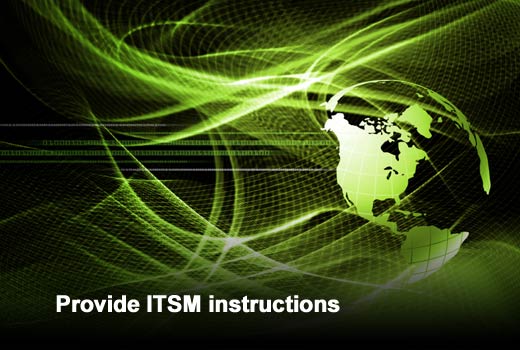A successful ITSM strategy is a lot like a game of connect-the-dots. Organizations may already have a ticketing system for incident management, for example, or perhaps the beginnings of a configuration management database (CMDB), and maybe even some cost management functions – all valid pieces of ITSM. Too often, however, they are disparate systems relying on different toolsets that are not yet integrated. So, while organizations may have some or even all of the dots, to have a fully functioning ITSM strategy, their CIOs have to connect them together in a meaningful way.
“Many IT environments evolved over the years in response to the dictates of circumstance and short-term crises,” says Mike Alley, director of ITSM for Logicalis US. “We are on the threshold of the day when the IT infrastructure can respond dynamically to change according to processes and parameters spelled out in advance in an effective ITSM strategy. As the pace of business and IT races faster and faster, the organizations that succeed are going to be those that use ITSM best practices to ensure that business and technology are pulling together in the same direction. Without an effective ITSM strategy in place, circumstance will continue to make your decisions for you.”
If you want your organization’s IT infrastructure to be able to respond to change according to processes and parameters spelled out in advance, then you need a solid ITSM plan. To help, Logicalis US has identified a list of seven steps to an effective ITSM strategy.
Click through for seven steps to an effective ITSM strategy, as identified by Logicalis.
Use proven standards
CIOs can use many sources of proven best practices to build an ITSM strategy of their own. The two primary sources are Information Technology Infrastructure Library (ITIL), which focuses on aligning the needs of the business with IT services, and Control Objectives for Information and Related Technology (COBIT), which has been described as the ITIL of governance and cost management. The most common place to start implementing an ITSM strategy is with three key ITIL best practices: incident management, problem management and change management.
Provide ITSM instructions
ITSM can be a reliable GPS for IT, but first you have to upload the data it needs to map your directions. Start with three key things:
- IT operations and efficiencies to enable you to get the most from current technology
- Management functions that drive value (e.g., cost, finance and asset management)
- Business enablement that aligns IT with business requirements and objectives
Be methodical
You don’t have to implement a comprehensive strategy all at once. In fact, defining a strategy allows you to address short-term pain points with the confidence that you are proceeding in the right long-term direction.
Create a service catalog
A foundational component of an effective ITSM strategy is a service catalog, which defines the IT services in enough detail to outline the technology and processes that are required to provide them. This also makes it possible to align IT services directly with the business strategies they support and has the additional advantage of helping IT show executive management the value it provides to the rest of the organization.
Address user needs
As scary as allowing business users to request technical services on their own might be, a scarier thought is the world of “shadow IT” that enterprising users have found outside the firewall surrounding a secure and protected corporate IT environment. Through a service catalog, IT can provide automation, workflow and orchestration and establish an approvals process consistent with the company’s IT strategy.
Develop a CMDB
A configuration management database allows the identification, management and tracking of the technology on which business services are built. It also allows IT pros to determine what each service costs and to identify the services — e.g., service desk, select managed services, and cloud computing — that could be more efficiently handled by a qualified third party. Implementing an effective ITSM strategy, as a result, is both a requirement and an enabler of out-tasking and cloud computing. All the information a service provider needs to set up automation and orchestration parameters for a cloud solution is available between the service catalog and CMDB.
Hire the right people
A key part of ITSM is enabling communication between IT and business, and IT needs to take the lead on this process. One way to do that is by training or hiring a business strategist – part technologist, part business analyst – who possesses enough technical knowledge to work well with developers and bring business knowledge to IT projects.










